 October 7, 2021 John E. Ross, KD8IDJ, Editor
| ||||||
ARRL Continues Its Efforts to Preserve Amateur Radio Secondary Use of the 3 GHz Band ARRL President Rick Roderick, K5UR, in a written statement on the newly filed H.R.5378 before the US House Commerce Communications and Technology Subcommittee on Wednesday, urged Congress to direct the FCC to preserve amateur radio's secondary use Approximately 10 days ago, ARRL became aware of a provision in the $3.5 Billion Budget Reconciliation Bill that would have required that approximately 200 MHz of the 3.1 - 3.45-GHz band be reallocated to the use of 5G vendors. Moving swiftly, the ARRL Executive Committee authorized ARRL's Washington Counsel to begin preparations to respond. But, confronted with the probable delay of the Reconciliation Bill and an uncertain future for the 3 GHz provisions, Subcommittee Chairman Michael Doyle (D-PA-18) and Representative Doris Matsui (D-CA-6) introduced similar reallocation language on September 29 as H.R.5378 (117th Congress, 1st Session) and scheduled hearings on it and related communications bills for October 6. The Executive Committee and the Legislative Advocacy Committee immediately set efforts in motion in Washington to obtain support for ARRL's position. Meetings were held on short notice to request support with the offices of Subcommittee members including Representatives Adam Kinzinger (R-IL-16) and Tim Walberg (R-MI-7), as well as with Representatives John Larson (D-CT-1) and Joe Courtney (D-CT-2). In addition, ARRL Atlantic Division Vice Director Bob Famiglio, K3RF, and ARRL Washington Counsel David Siddall, K3ZJ, met with Chairman Doyle's Chief of Staff on October 1, to explain why it's important that amateur radio continue to be permitted to operate in the 3.3 - 3.45-GHz band.
In his written statement to the Subcommittee in conjunction with the hearing, President Roderick emphasized that permitting Amateur Radio to continue to have use of the 3.3 - 3.45-GHz band on a strictly secondary, non-interfering basis will provide full protection to commercial licensees with exclusive licenses and further the public interest in providing a means for continued technological innovation. Despite vigorous opposition from ARRL and others, the FCC in 2020 ordered the "sunsetting" of the 3.3 - 3.5 GHz band in order to auction the spectrum to commercial 5G providers. The Commission allowed amateur operations to continue in the lower 150 megahertz of the band, 3.3 - 3.45 GHz, until it acts in a future rulemaking to address that spectrum. Amateur operations were allowed to continue in the upper 50 megahertz, 3.45 - 3.5 GHz, only until 90 days after the auction including that spectrum has closed. The auction began this week; it is likely that operations will have to cease in February or March, 2022. "A core standard of spectrum policy should be to maximize use of this valuable but finite spectrum resource," President Roderick told the panel. "The [FCC] in earlier proceedings adopted a variety of methods to share and maximize use of the spectrum by radio amateurs and others, but in its latest 3 GHz proceeding it did not do so, despite hundreds of comments filed by radio amateurs." President Roderick pointed out that in earlier proceedings, the FCC adopted methods to ensure unencumbered spectrum access by primary users while accommodating secondary users on a non-interference basis. "These methods work well and remain effective without complaint in other frequency bands, and also should be applied to the 3 GHz band," he said. Primary commercial users "would rarely use all of their licensed spectrum throughout their entire licensed service areas," President Roderick said. In its recent 3 GHz proceeding, however, the FCC "went beyond merely prohibiting amateur operations in areas and at times when primary Commission licensees might use the spectrum," ruling instead that all amateur operation in the subband being auctioned must terminate within 90 days of the auction's close. President Roderick told the FCC that it is not logical for the Commission to leave spectrum unused before licensees start using it. He said there is no technical basis for removing amateur secondary operations from the 3 GHz band where radio amateurs "long have used the bits and pieces of unused spectrum for technological innovation." H.R.5378 is not yet law, and ARRL's efforts to preserve amateur radio access to 3.3 - 3.45 on a secondary basis will continue. Read an expanded version. 16th Annual ARRL Online Auction Kicks Off on Friday, October 8 Get ready to bid and support ARRL education programming when the 16th Annual ARRL Online Auction begins on Friday, October 8, at 10 AM EDT (1400 UTC). The auction continues through Thursday, October 14. GigaParts is sponsoring this year's ARRL Online Auction. A preview of the items that will be up for bid began on Visit the Auction website, register to bid, and check out details on the items available, so you'll be ready to place a bid on your favorites. Plus, keep an eye on the ARRL Facebook page for featured products and auction highlights throughout the event. Prospective bidders must register and create an account. Your arrl.org user ID and password will not work on the auction site. Registration is a one-time action. If you have previously registered for the ARRL Online Auction, you can use the same username and password to sign into this year's auction. (If you have forgotten your username or password, click on the "Help" tab for assistance.) It's not necessary to register to browse the items for sale on the site, and you can register at any time during the auction.
If you don't want to bid but would still like to contribute to the ARRL Education and Technology Fund, visit arrl.org/donate. For more information about the ARRL Auction, contact Lisa Tardette, KB1MOI. ARDC Grant Provides ARESLAX with Sophisticated Noise Location Capabilities ARESLAX, an arm of the ARRL Los Angeles Section, has used a $23,600 grant from Amateur Radio Digital Communications (ARDC) to purchase equipment that will help Amateur Radio Emergency Service (ARES®) team members to locate and eliminate sources of radio "ARESLAX is a 501(c)3 nonprofit organization supporting emergency communication initiatives of the Los Angeles Section's ARES program," ARRL Los Angeles Section Manager Diana Feinberg, AI6DF, explained. "Earthquakes and wildfires are the primary disaster threats this region faces. Because these incidents occur without any advance warning, disaster communication groups in the Los Angeles Section must maintain a high degree of readiness." Thanks to the grant, Feinberg said, last spring ARESLAX purchased a Fluke ii910 Precision Acoustic Imager, which combines ultrasonic detection with visual techniques to pinpoint an interference source, such as power line noise, and produce photographic evidence. At the same time, ARESLAX used its own funds to purchase a Radar Engineers 243 RFI Locator and spent the summer familiarizing itself with the sophisticated equipment. "By combining these two purchases with our preexisting equipment, ARRL Los Angeles Section Technical Specialist Chris Parker, AF6PX, believes the Los Angeles Section now has EMI/RFI locating capabilities exceeding those of area utility companies and their contractors," Feinberg said.
"For an increasing number of Los Angeles Section hams, EMI or RFI issues have made the HF bands difficult or impossible to use for DXing, contesting, emergency communication, or casual operating," Feinberg said. She pointed out that the network of overhead power lines that expanded with the county from 1940 through 2010 has now deteriorated, resulting in arcing. "Additionally, our urban noise floor is rising from the millions of electrical devices used by consumers and businesses, including solar charging controllers and grow lights," Feinberg said. RFI complaints can go unresolved for years, and tracking down interference sources has been the focus of a corps of technical volunteers. The new equipment makes that job far less time-consuming and more successful, ARESLAX said. Read an expanded version. ARRL Podcasts Schedule
The On the Air and Eclectic Tech podcasts are sponsored by Icom. Both podcasts are available on iTunes (iOS) and Stitcher (Android) as well as on Blubrry -- On the Air | Eclectic Tech. The Premiere of NIGHT, the Movie During the Edmond (Oklahoma) Amateur Radio Society's ARRL Field Day 2021, Marcus Sutliff, N5ZY, spoke with visitors from John D'Aquino's Young Actors Workshop (YAW) and learned of their plans to make a short film in which amateur radio plays a role, and that they needed some help. The filming was to take place in Stillwater, Oklahoma, and they needed someone with film or video experience and someone who could serve as a technical advisor. Kevin O'Dell, N0IRW -- a member of the ARRL Public Relations Committee -- became involved in the project, and in short order, he was able to assemble radios and props, consult on the script, and get ready for a long day of filming.
The film's purpose is to give aspiring young actors a chance to hone their craft in a real movie environment. Thanks to the Oklahoma Film and Music Office, they were able to shoot three movie shorts in Oklahoma. In the Camp Hollywood 2021 film NIGHT, the young actors mature as the movie progresses. The story begins on a day when the sun mysteriously has failed to rise. One character mentions firing up grandpa's ham radio. His younger brother reminds him that he once called ham radio "the dinosaur's internet," but now it could be one source of help or information. The actual internet is down, along with power, telephones, and apparently satellites. All the adults are conveniently absent. The ending will leave you hoping for NIGHT 2. The movie premiered recently and is now available on YouTube as a 34-minute short. O'Dell stars as the ham radio voice of Colonel. He and Sutliff appear in the credits, so stay through the end. O'Dell got a shout-out from ARRL Oklahoma Section Manager Mark Kleine, N5HZR. "Thanks, Kevin, for putting a great light on amateur radio," he said. Radio Amateurs Invited to Participate in the Antarctic Eclipse Festival in December
During this and other HamSCI eclipse festivals, hams and citizen-scientists are asked to collect Doppler-shift data from time-standard stations, such as WWV. All that's needed is an HF radio connected to a computer. A GPS-disciplined oscillator is helpful for collecting data, but it is not required. Data collection will run from December 1 through December 10, and the results will be made available for scientific analysis.
All radio amateurs and shortwave listeners are invited to join in, even those located far from the path of totality. In 2020, more than 100 individuals from 45 countries took part in eclipse festivals.The instructions are available in multiple languages. HamSCI is an initiative of ham radio operators and geospace scientists dedicated to advancing scientific research and understanding through amateur radio activities. Eclipse festivals are pilot campaigns for the Personal Space Weather Station (PSWS), HamSCI's flagship project. The PSWS team seeks to develop a global network of citizen-science stations. Participants monitor the geospace environment to deepen scientific understanding and enhance the radio art. For more information on the Antarctic Eclipse Festival and how to participate, visit the HamSCI website. -- Thanks to Kristina Collins, KD8OXT Amateur Radio in the News ARRL Public Information Officers, Coordinators, and many other member-volunteers help keep amateur radio and ARRL in the news.
Share any amateur radio media hits you spot with us. ARRL Learning Network Webinars
Using the Raspberry Pi with Ham Radio / Presented by Jason Oleham, KM4ACK, Tuesday, October 19, 2021 @ 1:00 PM EDT (1700 UTC) Computers have become an important part of amateur radio. The Raspberry Pi is a low-cost yet powerful computer that can be used for many amateur radio tasks. Jason Oleham, KM4ACK, an avid YouTube content creator, discusses how to use the Pi, why he started using it, and why he developed Build-a-Pi, a script that gets hams up and running quickly. ARRL members may register for upcoming presentations and view previously recorded Learning Network webinars. ARRL-affiliated radio clubs may also use the recordings as presentations for club meetings, mentoring new and current hams, and discussing amateur radio topics. The ARRL Learning Network schedule is subject to change. Announcements
ARRL Seeks New Treasurer After 10 years of distinguished service to ARRL as its volunteer Treasurer, Frederick "Rick" Niswander, K7GM, has decided to step down when his current term expires in January 2022. ARRL is seeking qualified candidates from among its membership. The Board of Directors elects the Treasurer and other officers at its annual meeting in even-numbered years. The Treasurer is a non-voting member of the Board of Directors and
The position is unpaid; however, necessary expenses including travel to meetings are reimbursable. For further information see the full position description. A search committee has been established to recommend one or more candidates for Treasurer to the Board. Qualified members are invited to submit a statement of interest and qualifications via email to TreasurerSearch@arrl.org. The deadline is November 12, 2021. Microsoft Releases Windows Version 11 The official release date for the new Windows 11 operating system is October 5, Microsoft has announced, but it will be a slow reveal. Radio amateurs may be eager to learn if it will run the station software they're running under Windows 7 or Windows 10, and if they'll need new device drivers. "We are not too concerned," said Tom Wagner, N1MM, of the widely popular, free logging software that bears his call sign -- N1MM Logger+. "One member of the team and one end user has tested with The WSJT-X Development Group is similarly unconcerned. "A few WSJT-X users have been running on the beta Windows 11 release without any issues," said Bill Somerville, G4WJS. "This seems to be reasonable evidence that there should be no serious problems." Microsoft said that the free upgrade to Windows 11 has begun rolling out to eligible Windows 10 PCs, and PCs that come pre-loaded with Windows 11 will start to become available for purchase on October 5. A prompt to upgrade to Windows 11 will come to newer devices first, with all eligible devices to receive their updates by next summer, according to Gear Patrol. Windows 11 has higher technical requirements than Windows 10, which will be deprecated in 2025. Microsoft no longer supports Windows 7 or earlier iterations. Machines will need to have a 64-bit CPU, 4 GB of RAM, 64 GB of storage, and have Trusted Platform Module (TPM) version 1.2 or later enabled. Aaron Woodman, General Manager of Windows Marketing at Microsoft, told The Verge, "We expect all eligible devices to be offered the free upgrade to Windows 11 by mid-2022." Microsoft will continue to support Windows 10 until October 14, 2025. Read an expanded version. The K7RA Solar Update Tad Cook, K7RA, Seattle, reports: Sunspots were visible every day this week, but numbers were lower. Average daily sunspot numbers declined from 58.4 to 30.7, and average daily solar flux was down 2.9 points to 86.9. Geomagnetic activity was a little higher, with average daily planetary A index going from 7.3 to 8.1, and average daily middle latitude A index from 6.3 to 6.7.
Predicted solar flux is 82 on October 7 - 9; 80 on October 10 - 13; 75 on October 14 - 16; then 80, 85, 88, and 90 on October 17 - 20; 88 on October 21 - 22; 85 on October 23 - 24; 90, 100, 95, and 90 on October 25 - 28; 88 on October 29 - November 5; 85 and 80 on November 6 - 7, and 75 on November 8 - 12. Predicted planetary A index is 5 on October 7; 8 on October 8 - 10; 12 and 8 on October 11 - 12; 5 on October 13 - 17; 10, 12, 10, and 8 on October 18 - 21; 5 on October 22 - 24; 10 on October 25; 5 on October 26 - 31; 8 on November 1 - 2; 5 on November 3; 8 on November 4 - 5, and 5 on November 6 - 13. Sunspot numbers for September 30 - October 6 were 46, 28, 25, 38, 29, 27, and 22, with a mean of 30.7. The 10.7-centimeter flux was 94.6, 90.5, 87, 86, 83.5, 81.7, and 84.8, with a mean of 86.9. Estimated planetary A indices were 9, 15, 8, 6, 6, 5, and 8, with a mean of 8.1. Middle latitude A index was 6, 13, 6, 6, 4, 6, and 6, with a mean of 6.7. A comprehensive K7RA Solar Update is posted Fridays on the ARRL website. For more information concerning radio propagation, visit the ARRL Technical Information Service, read "What the Numbers Mean...," and check out the Propagation Page of Carl Luetzelschwab, K9LA. A propagation bulletin archive is available. For customizable propagation charts, visit the VOACAP Online for Ham Radio website. Share your reports and observations. Just Ahead in Radiosport
For more information, visit the ARRL Contest Calendar. Upcoming ARRL Section, State, and Division Conventions Some conventions and hamfests may have been canceled or postponed due to the coronavirus pandemic. Check the calendar of canceled events on the ARRL website.
Find conventions and hamfests in your area. ARRL -- Your One-Stop Resource for
Subscribe to...
Free of charge to ARRL members...
| ||||||
 of the 3-GHz band. President Roderick's statement was the result of a quick, well-organized response by ARRL to counter the continuing threat to amateur radio's secondary use of the 3 GHz band.
of the 3-GHz band. President Roderick's statement was the result of a quick, well-organized response by ARRL to counter the continuing threat to amateur radio's secondary use of the 3 GHz band.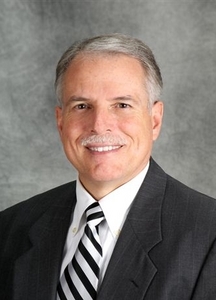
 Tuesday, October 5. This year's auction features ARRL Product Review and vintage equipment, classic books, novelties, and the ever-popular ARRL Lab "Mystery" boxes.
Tuesday, October 5. This year's auction features ARRL Product Review and vintage equipment, classic books, novelties, and the ever-popular ARRL Lab "Mystery" boxes.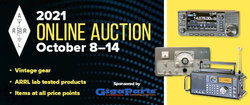
.jpg) frequency interference (RFI) that could hinder their operations.
frequency interference (RFI) that could hinder their operations.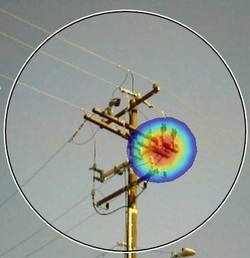
.jpg) The latest episode of the On the Air podcast (Episode 21) features a discussion with Steve Goodgame, K5ATA, about the new edition of The ARRL Handbook and how it can be useful to new hams.
The latest episode of the On the Air podcast (Episode 21) features a discussion with Steve Goodgame, K5ATA, about the new edition of The ARRL Handbook and how it can be useful to new hams..jpg) The latest edition of Eclectic Tech (Episode 44) features Steve Allen, KC1SA, and a discussion about the current electronics parts shortage and what it may mean for amateurs.
The latest edition of Eclectic Tech (Episode 44) features Steve Allen, KC1SA, and a discussion about the current electronics parts shortage and what it may mean for amateurs.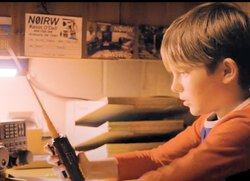
(1).jpg) The
The -with-penguins-(Zo-Linker).png)
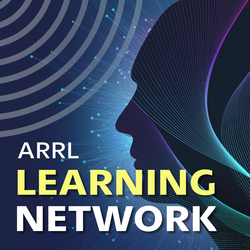 Visit the
Visit the 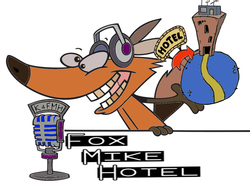 The overall winner of the 2021 Fox Mike Hotel Portable Operations Challenge (
The overall winner of the 2021 Fox Mike Hotel Portable Operations Challenge (.jpg) must be a licensed radio amateur and a full member of the ARRL for 4 continuous years prior to nomination. The ARRL Bylaws define the role of the Treasurer as follows:
must be a licensed radio amateur and a full member of the ARRL for 4 continuous years prior to nomination. The ARRL Bylaws define the role of the Treasurer as follows:.jpg) Windows 11 and not reported issues. We will fix them if they arise."
Windows 11 and not reported issues. We will fix them if they arise."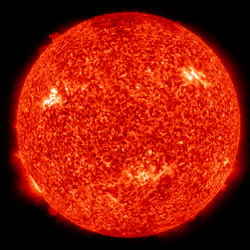 Friday, October 1 was affected by a solar flare from sunspot group AR2871, driving the planetary A index to 15. This had a greater effect at higher latitudes, with Alaska's College A index hitting 30 and 31 on Friday and Saturday. In the middle of the UTC day on Saturday, the College K index hit 7 -- a high number.
Friday, October 1 was affected by a solar flare from sunspot group AR2871, driving the planetary A index to 15. This had a greater effect at higher latitudes, with Alaska's College A index hitting 30 and 31 on Friday and Saturday. In the middle of the UTC day on Saturday, the College K index hit 7 -- a high number.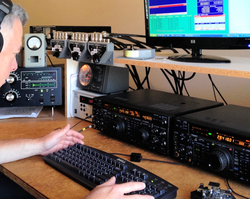 October 9 - 10 -- Scandinavian Activity Contest (SSB)
October 9 - 10 -- Scandinavian Activity Contest (SSB)







